How to paint kitchen cabinets
Advices
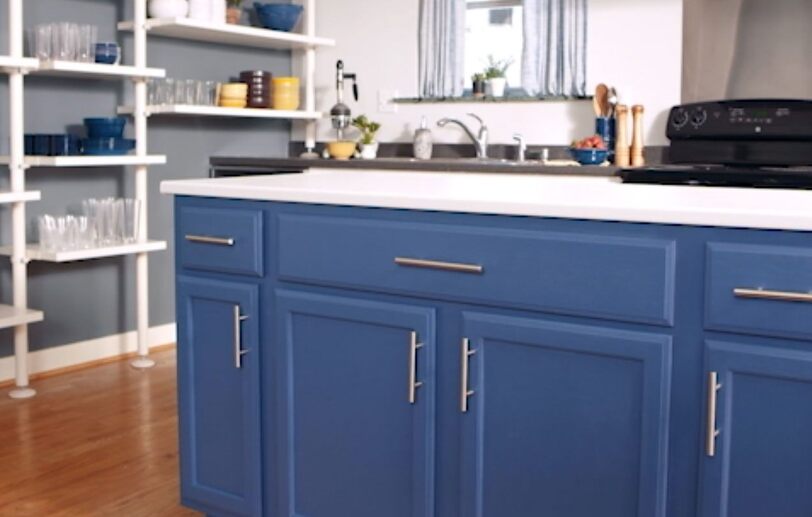
When it comes to painting kitchen cabinets, we know there are questions: How do I clean cabinets before painting? What paint should I use? What does it cost? Relax: repainting cabinets doesn’t have to be intimidating.
With Benjamin Moore’s ADVANCE® paint, a DIY kitchen cabinet refresh can be more affordable than replacing the cabinets outright—and done in less time than you think.
Step 1: Flat Surfaces and Space to Dry
A flat painting surface is the key to refinishing kitchen cabinets. Remove all draws and doors, and don’t forget to remove any hardware. Then find an area that gives you enough room to work—and enough space to let everything dry for extended periods of time.
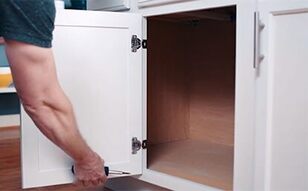
Step 2: Prep! Prep! Prep!
The first rule of cabinet repainting: Make sure the cabinets and doors are clean and dry. Use a gentle grease remover and a damp sponge to wipe them clean, and let everything dry thoroughly. After cleaning, it’s time to roughen things up! Most cabinet finishes are too smooth or glossy to reprime and repaint, so using a medium sandpaper (we like 100- to 150-grit), sand down your surfaces a little—not enough to sand away the current finish entirely, but enough to give the primer a little more grit to stick to. Wipe away any dust with a slightly damp cloth, then let dry.
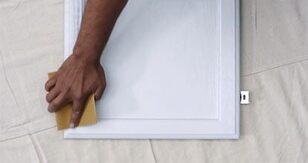
Step 3: Protect Your Surroundings
Make sure to tape a drop cloth or another protector over the countertops and the surrounding work area while painting.
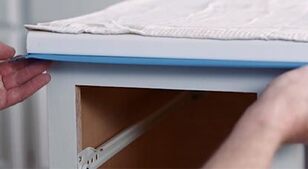
Step 4: Ready to Prime
A high-quality primer lays the foundation for a successful paint job. Fresh Start High-Hiding All-Purpose Primer is a favorite of professional painters. This acrylic primer offers maximum hide, seals and suppresses stains, and provides a mildew-resistant coating for wood and other surfaces. And if your kitchen cabinets are a darker color, you’re in luck: Fresh Start is the go-to primer for drastic paint color changes.
Do not use lacquer-based primers, as they can impede how ADVANCE adheres to the surface of the cabinets.
After you’re done, take a break: the primer must dry at least 24 hours before moving on to Step 5.
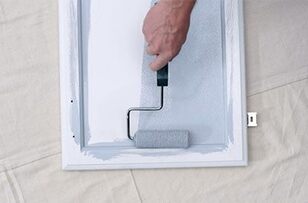
Step 5: Sand Again
Once your primer is completely dry (at least 24 hours in a well-ventilated area), it’s time to sand again. Using a fine, 220-grit paper or sanding block, sand all surfaces lightly, focusing especially on areas that may have drips or pools (i.e.: inside corners and anywhere two flat areas meet). Make sure the surface is as even as possible—this ensures your paint will go on smoothly. Wipe away any dust with a slightly damp cloth, then let dry.
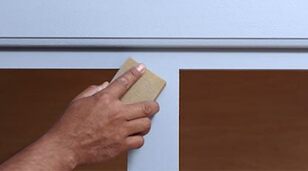
Step 6: Time to Paint!
Using a premium Benjamin Moore nylon/polyester brush, apply the first coat of ADVANCE paint.
Time-saving tip: Painting cabinet doors (and similar large areas) may go faster if you use a foam or microfiber paint roller instead of a brush. Like with primer, let your first coat of paint dry completely before moving on.
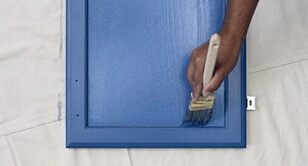
Step 7: Repeat Step 5
Sand a third and final time with 220-grit sandpaper.
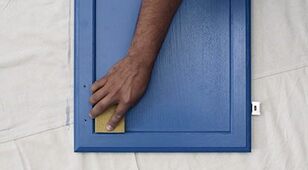
Step 8: Repeat Step 6
A second coat of ADVANCE gives you complete coverage and allows the finish to cure evenly. We love the look of Blueberry Hill 812 and the pop of color it brings to formerly white cabinets.

Step 9: Let It Dry!
The longer the paint dries, the more durable its finish will be, and the less likely it will stick during reinstallation. At minimum, let the cabinets dry in a well-ventilated area for at least 24 hours—however, two or three days is even better. If you want to spruce up the interior of your cabinets we’ve got you covered.
Once everything is fully dry, you can begin replacing the hardware in your repainted cabinets and returning them to your newly refreshed kitchen. Looking for another project? Try painting your bathroom cabinets next.
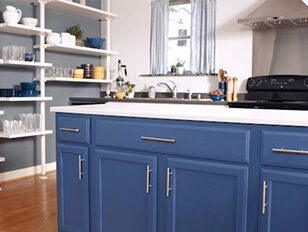
"It all comes down to surface preparation throughout the project. From thoroughly cleaning the surfaces prior to painting, selecting the best primer and topcoats for the specific project and consistently sanding between coats, many factors contribute to a successful, long-lasting cabinet project. Next, identifying the most appropriate method of application based on customers' preferences is critical and also contributes to the level of protection needed for the surrounding workspace and other surfaces."
This tip was given by a Dallas painter professional at Precision Painting Plus